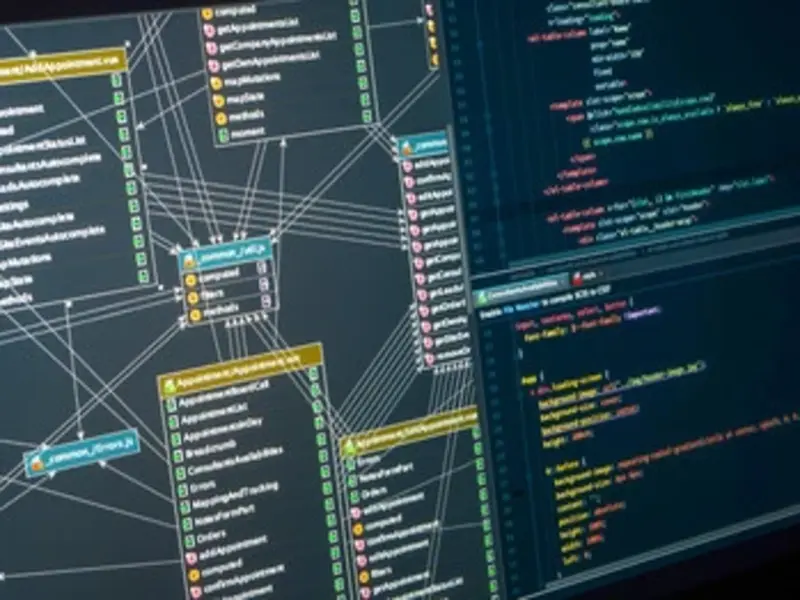In the fast-paced world of technology, software development has become an essential aspect of almost every industry. The traditional methods of software development, which often involve a single team working in isolation, are evolving to keep up with the demands for faster delivery, higher quality, and more innovative solutions. One such evolution is the concept of co-development software, a collaborative approach where multiple teams work together to achieve a common goal.
Co-development software is not just a buzzword; it’s a methodology that addresses several challenges in modern software development. It leverages different teams’ collective expertise, resources, and perspectives, often spread across various locations and organizations. This collaborative model can significantly enhance software projects’ efficiency, creativity, and overall success. In this article, we will delve into the intricacies of co-development software, exploring its benefits, challenges, best practices, and real-world applications.
Table of Contents
ToggleWhat is Co-Development Software?
At its core, co-development software is about collaboration. It involves multiple development teams coming together to work on a single project, sharing responsibilities, resources, and knowledge. This approach contrasts with traditional models where a single team handles the entire development lifecycle. Co-development can occur within a single organization, involving different departments or teams, or it can extend across multiple organizations, fostering partnerships and alliances.

The essence of co-development lies in its ability to harness the strengths of diverse teams. Each team brings its unique skills, experiences, and perspectives to the table, contributing to a richer and more robust software solution. This collaborative approach is particularly beneficial in complex projects that require specialized knowledge in various domains. For instance, a healthcare software project might benefit from the combined expertise of a medical technology company and a software development firm.
Benefits of Co-Development Software
- Enhanced Innovation and Creativity: One of the primary advantages of co-development software is the infusion of diverse ideas and perspectives. When multiple teams collaborate, they bring different viewpoints and problem-solving approaches, which can lead to innovative solutions that might not emerge in a single-team setup. This diversity fosters creativity, enabling teams to think outside the box and explore unconventional solutions.
- Improved Quality and Efficiency: Co-development leverages the strengths of each team, allowing for a more efficient development process. By dividing tasks based on expertise, teams can work simultaneously on different components of the project, reducing the overall development time. Moreover, the collaborative nature of co-development encourages continuous feedback and peer reviews, leading to higher-quality software.
- Risk Mitigation: Sharing responsibilities among multiple teams can also mitigate risks. In a traditional single-team approach, the failure or delay of one team can jeopardize the entire project. In contrast, co-development distributes the risk across several teams. If one team encounters issues, others can step in to assist or take over, ensuring the project stays on track.
- Resource Optimization: Co-development allows organizations to optimize their resources more effectively. By pooling together resources such as tools, technologies, and human capital, teams can achieve more with less. This collaborative approach can be particularly beneficial for smaller organizations that may lack the resources to undertake large projects independently.
Challenges of Co-Development Software
While co-development software offers numerous benefits, it also presents several challenges that need to be addressed for successful implementation.

- Communication and Coordination: Effective communication and coordination are crucial in a co-development setup. With multiple teams involved, often across different locations and time zones, ensuring everyone is on the same page can be challenging. Miscommunication or lack of clarity can lead to delays, errors, and conflicts. Therefore, establishing clear communication channels and protocols is essential.
- Cultural and Organizational Differences: When teams from different organizations collaborate, cultural and organizational differences can pose challenges. Each organization may have its own work culture, processes, and management styles. Bridging these differences requires mutual understanding, respect, and a willingness to adapt. Building a cohesive team spirit despite these differences is vital for the success of co-development projects.
- Intellectual Property and Confidentiality: Collaborating with external teams raises concerns about intellectual property (IP) and confidentiality. Organizations need to establish clear agreements regarding IP rights, data sharing, and confidentiality to protect their interests. Legal frameworks and contracts should be put in place to address these concerns and prevent potential disputes.
Best Practices for Co-Development Software
To maximize the benefits and overcome the challenges of co-development software, organizations should adopt several best practices.
- Define Clear Objectives and Roles: At the outset of a co-development project, it is crucial to define clear objectives, roles, and responsibilities. Each team should understand the project’s goals, their specific tasks, and how their contributions align with the overall project. This clarity helps in managing expectations and ensures that all teams are working towards a common goal.
- Establish Effective Communication Channels: Effective communication is the backbone of successful co-development. Organizations should establish robust communication channels and protocols to facilitate seamless interaction among teams. Regular meetings, progress updates, and collaborative tools such as project management software, video conferencing, and instant messaging can enhance communication and coordination.
- Foster a Collaborative Culture: Building a collaborative culture is essential for the success of co-development projects. Organizations should encourage teamwork, knowledge sharing, and mutual respect among teams. Creating opportunities for teams to interact, share ideas, and learn from each other can strengthen the collaborative spirit and drive project success.
- Implement Agile Methodologies: Agile methodologies, with their emphasis on flexibility, continuous feedback, and iterative development, are well-suited for co-development projects. Agile practices such as sprints, stand-up meetings, and retrospectives can enhance collaboration, improve efficiency, and ensure timely delivery of high-quality software.
- Address Legal and IP Concerns: To protect intellectual property and ensure confidentiality, organizations should establish clear legal frameworks and agreements. These should outline IP rights, data sharing protocols, and confidentiality measures. Involving legal experts in the drafting and review of these agreements can help prevent potential disputes and safeguard the interests of all parties involved.
Real-world applications of Co-Development Software
Co-development software is being adopted across various industries, driving innovation and efficiency in numerous real-world applications.
Healthcare
In the healthcare industry, co-development is enabling the creation of advanced medical software solutions. For instance, a pharmaceutical company and a software development firm might collaborate to develop a clinical trial management system. The pharmaceutical company provides expertise in clinical trials, while the software firm contributes its technical know-how, resulting in a robust and effective solution.
Automotive
The automotive industry is another sector where co-development is making a significant impact. Car manufacturers are increasingly collaborating with technology firms to develop autonomous driving systems, infotainment solutions, and connected car technologies. These collaborations combine the automotive expertise of car manufacturers with the technological prowess of software firms, leading to innovative and cutting-edge automotive solutions.
Finance
In the finance sector, co-development is facilitating the creation of sophisticated financial software. Banks and financial institutions are partnering with fintech companies to develop solutions such as mobile banking apps, blockchain platforms, and AI-driven investment tools. These collaborations leverage the financial expertise of banks and the technological innovation of fintech firms, resulting in advanced and user-friendly financial solutions.
Government and Public Sector
Governments and public sector organizations are also embracing co-development to enhance their digital services. For example, a government agency might collaborate with a software development firm to create a citizen services portal. The agency provides insights into public services and regulations, while the software firm brings in the technical expertise, resulting in an efficient and user-friendly portal for citizens.
Taking Everything into account
Co-development software represents a transformative approach to software development, fostering collaboration, innovation, and efficiency. By leveraging multiple teams’ collective expertise and resources, co-development can address the challenges of traditional software development models and drive the creation of high-quality, innovative solutions.
However, successful co-development requires careful planning, effective communication, and a collaborative culture. Organizations must define clear objectives, establish robust communication channels, foster teamwork, and address legal and IP concerns to reap the full benefits of co-development.
As industries continue to evolve and the demand for innovative software solutions grows, co-development is poised to become an increasingly vital approach in the software development landscape. By embracing co-development, organizations can stay ahead of the curve, delivering cutting-edge software solutions that meet the needs of a rapidly changing world.
FAQs on Co-Development Software
Q1: What is co-development?
A1: Co-development is a collaborative approach to software development where multiple teams work together towards a shared goal.
Q2: How does co-development benefit a project?
A2: Co-development enhances a project by combining the strengths and expertise of different teams, leading to more innovative solutions and faster development times.
Q3: What are some key elements of successful co-development?
A3: Successful co-development involves clear communication, shared objectives, mutual respect, and well-defined roles and responsibilities for all participating teams.
Q4: Can co-development be applied to any type of software project?
A4: Yes, co-development can be applied to a wide range of software projects, from small applications to large-scale enterprise solutions.
Q5: What tools are commonly used in co-development?
A5: Common tools for co-development include version control systems, project management software, collaborative coding platforms, and communication tools like chat and video conferencing.
Q6: What challenges might arise in a co-development project?
A6: Challenges in co-development can include coordinating across different time zones, managing diverse work styles, ensuring consistent quality, and maintaining clear communication.
Q7: How can teams ensure effective collaboration in co-development?
A7: Effective collaboration can be ensured by setting up regular meetings, using collaborative tools, establishing clear guidelines, and fostering a culture of openness and trust.
Q8: Is co-development the same as outsourcing?
A8: No, co-development is different from outsourcing. While outsourcing involves hiring an external company to handle a project, co-development involves multiple teams working together as equal partners towards a common goal.

